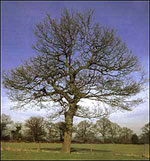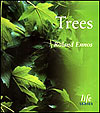Trees: Magnificent structures
Roland Ennos
Introduction

Trees are perhaps the most familiar of all organisms. They grow all around us, in towns as well as in the countryside, and most people can recognise a few species. Not only are trees the largest organisms that have ever lived--some giant redwoods are ten times heavier than a full-grown blue whale--but they have also dominated dry land for over 300 million years, far longer than the dinosaurs or mammals. In this seminar Roland Ennos, lecturer in biomechanics at the University of Manchester and author of Trees, investigates the structure of trees; how they are built and how they work. By looking at trees as living organisms, struggling for survival in a hostile world, we can start to appreciate not only their beauty, but also the sheer ingenuity of their structures and lifestyles.

The text of this seminar is taken from Trees by Roland Ennos, published by The Natural History Museum, copyright The Natural History Museum, 2001.
Roland Ennos investigates the world of trees and sheds new light by asking simple questions. How did trees evolve? How do they stand up? Why are there so many different types? How and why do we exploit them? All these questions and more are answered in this richly illustrated book, which provides a fascinating insight into the biology of these magnificent plants.
Topics
- The advantages of being a tree
- How trees lift water
- How trees stand up: Wood
- How trees stand up: Shoots, roots and growth response
- Limits to the heights of trees
About the author
Roland Ennos graduated in natural sciences from the University of Cambridge in 1984. Since then he has carried out research in the science of biomechanics, a field which allows him to combine his interests in natural history and structural engineering. Among other things he has investigated how flies fly, how roots anchor plants in the ground and why tropical trees develop huge buttresses. Since 1990 he has been a lecturer in the School of Biological Sciences at the University of Manchester, UK, where his teaching has allowed him to indulge his fascination with the evolution and diversity of life, while his research has taken him to forests around the world. His travels provided the inspiration for his recent textbook, Plant Life.